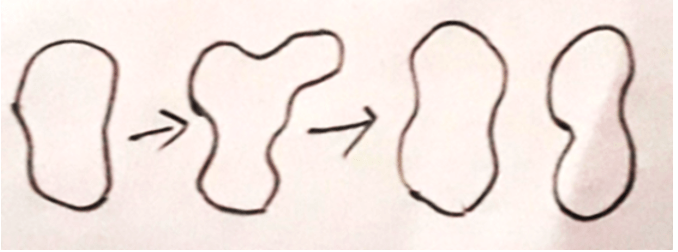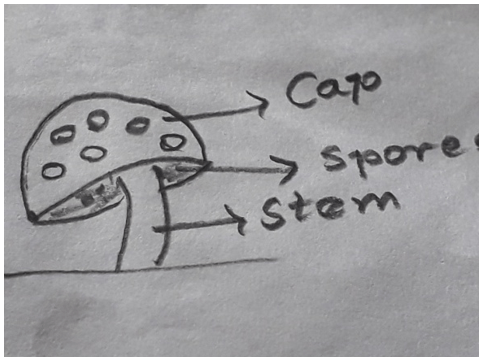This set of Class 11 Biology Chapter 2 Multiple Choice Questions & Answers (MCQs) focuses on “Biological Classification” for NEET Preparation.
1. Which of the following is used in brewing of beer?
a) Penicillium
b) Yeast
c) Club fungi
d) Mushroom
View Answer
Explanation: Yeast is used in brewing of beer. Yeast helps in the fermentation of Beer and wine. Fermentation is the process in which yeast turns wheat into alcohol and CO2.
2. Which among the following is used in preparation of anti-biotic?
a) Yeast
b) Penicillium
c) Mushroom
d) Rhizopus
View Answer
Explanation: Pencillium is used in preparation of anti-biotic called Penicillin. Penicillin was first discovered by Alexander Flemming during Second World War and was a profounding discovery that saved the lives of many soldiers during WW-II.
3. Penicillin was first discovered from _______
a) Penicillium roqueforti
b) Penicillium chrysogenum
c) Penicillium notatum
d) Penicillium camemberti
View Answer
Explanation: Penicillin was first discovered from Penicillium notatum. Penicillium notatum is fungus belonging to the division of Ascomycetes and family of Penicillium. Today, Penicillium chrysogenum plays a vital role in the preparation of Penicillin.
4. Who discovered Penicillin and when?
a) Alexander Graham Bell in 1918
b) Alexander Flemming in 1928
c) Alexander Flemming in 1938
d) Alexander Flemming in 1948
View Answer
Explanation: Penicillin was the first anti-biotic to be discovered by Alexander Flemming on September 28 1928. This discovery is a milestone in the history of science and changed the lives of many soldiers.
5. Yeast grows in ______
a) damp and dark conditions
b) dry and cold conditions
c) sunlight
d) hot deserts
View Answer
Explanation: Yeast grows in damp and dark conditions. It doesn’t need sunlight to grow. Refrigerators provide cold and dry conditions that prevent growth of yeast. Yeast preferably grows well in warm conditions than that of cold conditions.
6. Which among the following is incorrect about the following figure?

a) The figure shows budding of yeast
b) In budding nuclei is split equally in both cells
c) Yeast can reproduce only through budding
d) It takes around two hours to complete a cycle of budding
View Answer
Explanation: The figure shows budding of yeast. Yeast can reproduce both by budding and sexual spores. It takes around two hours to complete a cycle of budding. In budding nucleus split equally in both the cells.
7. Which among the following fungus are used in the manufacture of proteins?
a) Asperigillus niger
b) Saccharomyces cerevisiae
c) Trichoderma
d) Aspergillus flavus
View Answer
Explanation: Fungi add great economic value to drug and pharmaceutical industry. They are used in preparation of beer, baking of bread and manufacture of proteins. Saccharomyces cerevisiae is used in manufacture of proteins.
8. Which among the following statements are incorrect?
a) Fungi are used in the manufacture of proteins, beer and bread
b) Fungi are the natural scavengers on the Earth
c) Penicillium camemberti is used in the manufacturing of penicillin
d) Fungi grow in damp and dark regions
View Answer
Explanation: P.Notatum and P.chrysogenum are used in the manufacture of Penicillin. Fungi are used in the manufacture of proteins, beer and bread. Fungi are the natural scavengers on the Earth. Fungi grow in damp and dark areas.
9. Which is the main source of energy for yeast?
a) Sunlight
b) Nitrogen
c) Organic compounds
d) Nitrates
View Answer
Explanation: Organic compounds are the main source of energy for yeast. They acquire energy from glucose, sucrose and sometimes even from disaccharides like maltose and galactose.
10. Assume that after every budding cycle, the parent organism becomes barren. And the daughter organism produced further gives rise to a new organism. After a period of 78 hours, how many fertile and barren organisms would be left if the initial number of organisms N0 = 2 (Assume that every budding cycle takes 2 hours)?
a) 1 and 239-1 respectively
b) 1 and 39 respectively
c) 2 and 78 respectively
d) 2 and 240-1 respectively
View Answer
Explanation: After one budding cycle, number of fertile and barren yeasts are 1 and 1 respectively. After two budding cycles, number of fertile and barren yeasts are 1 and 2 respectively. After n budding cycles, number of fertile and barren yeasts would be 1 and n respectively.
Therefore, after 78 hours number of budding cycles = 78/2 = 39
Since, N0 = 2, after 78 hours number of fertile and barren yeasts are 2 and 78 respectively.
11. Which among the following are incorrect?
a) Mushrooms are edible and grow in rainy season
b) Slime molds are immobile
c) Yeast are sometimes found multi-cellular by formation of hyphae
d) Yeast doesn’t need sunlight to grow
View Answer
Explanation: Slime molds are motile and this is the major difference between molds and slime molds. Mushrooms are edible and are grown in rainy season. Yeasts are sometimes found multi-cellular by formation of hyphae. Yeast doesn’t need sunlight to grow.
12. Yeast grows exponentially through budding. If one budding cycle takes 90 minutes, what will be the population of yeast after 144 hours if the initial population N0 = 5?
a) 480
b) 5 × 296
c) 96×25
d) 144×25
View Answer
Explanation: After 144 hours, number of budding cycles = 144 × 60/90 = 96 cycles.
Population after ‘n’ budding cycles = N0×2n.
Population after 96 cycles = 5 × 296.
13. Mushroom consists of stem, cap and spores at the bottom of the cap.
a) True
b) False
View Answer
Explanation: Mushroom consists of stem, cap and spores at the bottom of the cap. Spores are the main mode of reproduction in mushrooms. The following figure describes the parts in a mushroom.

14. The branch involved in study of Fungi is called Mycology.
a) True
b) False
View Answer
Explanation: The branch involved in the study of Fungi is called Mycology. Mycologists are those who study fungi in detail. Fungal infections are scientifically termed as Mycosis or Mycoses (plural).
15. Which among the following are not mycoses?
a) Candidiasis
b) Scabies
c) Tinea versicolor
d) Cryptococcosis
View Answer
Explanation: Mycosis is the scientific terminology for fungal infection. Scabies is not a fungal infection. It is caused due to an arthropod called mite. Candidiasis, Tinea versicolor and cryptococcosis are different mycoses.
Sanfoundry Global Education & Learning Series – Biology – Class 11.
To practice all chapters and topics of class 11 Biology for NEET, here is complete set of 1000+ Multiple Choice Questions and Answers.
If you find a mistake in question / option / answer, kindly take a screenshot and email to [email protected]
- Check Class 11 - Books
- Practice Class 11 - Chemistry MCQs
- Practice Class 11 - Mathematics MCQs
- Practice Class 12 - Biology MCQs
- Practice Class 11 - Physics MCQs
